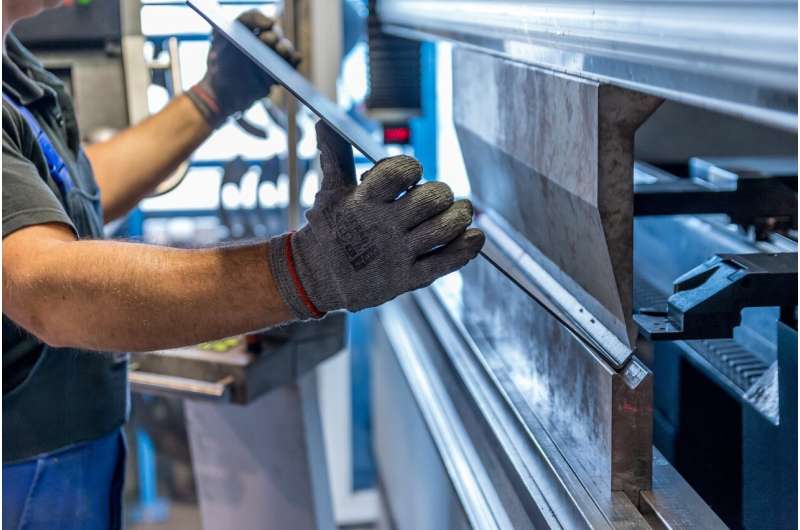Better understanding of blast furnace operations for more sustainable steel production

Worldwide, we produce more than two gigatons of steel a year, the vast majority of which is produced in blast furnaces. In order to make the blast furnace process more sustainable—less energy consumption, less maintenance, less CO2 emissions—it helps to increase the understanding of how these blast furnaces work. In his doctoral research, Tim Nijssen arrived at a model that can quantitatively describe the internal operation of blast furnaces. This model can be used to study new innovations in the blast furnace process, for example the application of hydrogen in the process—a serious option for reducing CO2 emissions from steel production.
Despite its enormous economic impact, much of the working of blast furnaces remains unknown. This is mostly due to the extremely high temperature and harsh conditions inside the furnace, which make any internal measurements impossible.
Nijssen focussed in his research on the bottom section of the furnace (also known as the hearth), where the liquid iron is collected and tapped, and a bed of unreacted carbon particles floats in this bath of liquid metal. "This section of the blast furnace is especially interesting, as the flow of liquid metal damages the heat-resistant walls, thereby determining the lifetime of the furnace," says Nijssen.
Lab-scale model of the blast furnace hearth
He used both numerical and experimental methods to investigate this complex system. First, an existing computer simulation technique, which was previously mostly used for gas-solid systems, was extended to handle the heavy and viscous liquid metal. He compared this new model with experiments on drinking water softening reactors, and found the model predicts the liquid-solid behavior well.
Next, Nijssen used a novel experimental technique termed Magnetic Particle Tracking (MPT) to investigate liquid-solid systems. In this technique, sensors measuring magnetic field strength are used to track the movement of a single magnetic particle within a system of non-magnetic particles.
Nijssen constructed a lab-scale model of the blast furnace hearth, in which room-temperature water and hollow particles were used to represent the liquid iron and carbon particles. The behavior of the bed was observed under various conditions and alternating liquid levels, and MPT was used to investigate the movement of a single particle within the dense bed.
"The newly developed simulation technique was used to recreate this system numerically, in order to further verify the accuracy of the model," says Nijssen. "Additionally, the computer model allowed to visualize the flow of the liquid, which was not possible in experiments."
With the numerical model verified through lab-size simulations, Nijssen scaled-up towards the large size of the industrial blast furnace. A series of simulations of a 5- and 10-meter diameter blast furnace hearth was conducted, in which the particle and liquid iron movement were observed under various circumstances. The mutual interaction between the solid and liquid phases was found to be of great importance.
"Studies like this increase our understanding of the blast furnace, which can help us improve the blast furnace process in the near future, and make it more sustainable," Nijssen explains.
"With a model like this, we can really get a look into the furnace, which is impossible for the real reactor. That allows us to study the behavior of the liquid metal and coke particles under various conditions. It is a very useful tool for improving the current process, for example such that less maintenance is required, but also to test new innovations. Obviously, that is much more convenient in a computer simulation than in a running blast furnace."
"An important example in this regard is the use of (sustainably produced) hydrogen in the blast furnace to reduce CO2 emissions. This has a significant influence on the internal conditions of the furnace. With models like the one developed here, we can visualize that influence, and investigate how blast furnaces already in production today can be adapted to accept hydrogen."
Provided by Eindhoven University of Technology




















